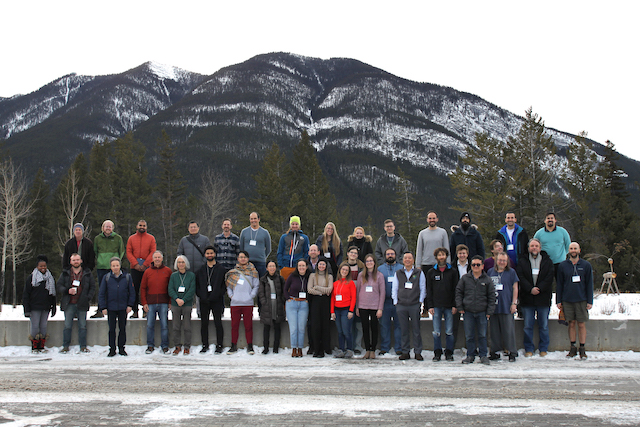Subfactors and Fusion (2-)Categories (23w5091)
Organizers
David Penneys (The Ohio State University)
Terry Gannon (University of Alberta)
Theo Johnson-Freyd (Dalhousie University)
Julia Plavnik (Indiana University)
Description
The Banff International Research Station will host the “Subfactors and Fusion (2-)Categories” workshop in Banff from December 3 to December 8, 2023.
The symmetries of classical mathematical objects form a group. In the past several decades, we have seen new quantum mathematical objects like von Neumann algebras and quantum field theories whose symmetries are best described by tensor categories. One reason for this is that these mathematical objects naturally form higher categories, and thus their endomorphisms naturally form higher monoidal categories. In this sense, we view fusion categories as objects which encode quantum symmetries. Subfactors are a rich source of examples of exotic unitary fusion categories, and conversely, every unitary fusion category arises from a subfactor. This correspondence leads to deep mathematical connections between these fields. These mathematical objects are also intimately related to conformal field theory and topological phases of matter, which give topological quantum field theories, in which higher categories play an important role. The purpose of this workshop is built on the 2014 and 2018 BIRS workshops on subfactors and fusion categories, with the goal of studying these objects through a higher categorical lens. To do so, we will bring together world experts from subfactors, fusion categories, higher categories, and mathematical physics to further develop the deep and rich connections between these fields.
The Banff International Research Station for Mathematical Innovation and Discovery (BIRS) is a collaborative Canada-US-Mexico venture that provides an environment for creative interaction as well as the exchange of ideas, knowledge, and methods within the Mathematical Sciences, with related disciplines and with industry. The research station is located at The Banff Centre in Alberta and is supported by Canada’s Natural Science and Engineering Research Council (NSERC), the U.S. National Science Foundation (NSF), and Alberta’s Advanced Education and Technology.






